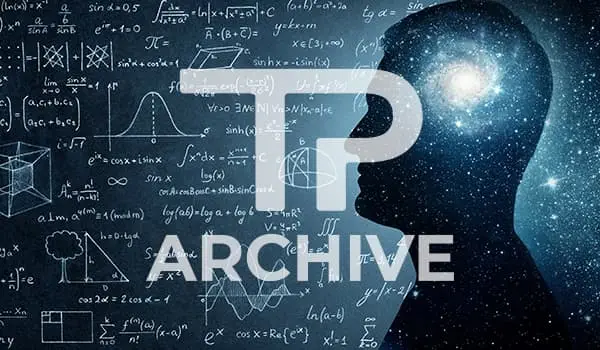
NATIONAL SEMINAR THEORETICAL HIGH ENERGY PHYSICS (March 2020)
CANCELLED
- Date:
Friday, 13 March 2020
- Speakers:
Piet Mulders (VU & Nikhef)
The entangled 3D structure of the Standard Model
Entanglement of tripartite qubit states can be separated into two different inequivalent classes that seem to be suitable to represent leptons and quarks in the Standard Model. A simple supersymmetric basis with two- and three-fold symmetry can incorporate some of the arbitrariness in the symmetry structure of the Standard Model as well as in its family structure, even if many open ends remain, such as a need for a radiative mechanism for mass generation of quarks and leptons.Tanja Hinderer (UvA)
Exploring frontiers in subatomic physics with gravitational waves
The gravitational waves from inspiraling binary systems encode detailed information about the nature and internal structure of the compact objects. These signatures arise from spin and tidal effects including the tidal excitation of the objects’ characteristic quasi-normal modes, as I will explain. A particularly interesting application is to the case of neutron stars, where tremendous gravity compresses matter to up to several times nuclear density. This makes neutron stars unique laboratories for strongly interacting matter in the ground state at the highest physically possible densities, far from the realms accessible with collider experiments and first-principles theoretical calculations. Matter under such extreme conditions likely exhibits a variety of emergent phenomena and novel phases not encountered anywhere else in the universe. Characterizing these properties with gravitational waves will help us gain a deeper understanding of strong interactions, their unusual features, and how the structure of visible matter assembles from its constituents. I will describe how this characterization can be accomplished by illustrating the method for the dominant effects. It requires computing the connection to gravitational wave signatures using a tapestry of approximation schemes for the interplay of dynamical gravity and matter, and constructing efficient models needed for data analysis. I will summarize what we have learned from recent measurements and conclude with an outlook onto the remaining challenges and exciting prospects for the next years as gravitational-wave science continues to move towards an era of precision physics.Daan Meerburg (RUG)
A new decade in cosmology
In a period of 40 years, observational cosmology has transformed from backyard science led by a small number of people into huge experimental efforts, counting sometimes thousands of members. While early experiments were able provide breakthrough discoveries with limited man power, today these large collaborations are required because we are reaching the limits of our experimental capacity. Although challenging, new cosmological observations could still provide us with monumental discoveries. In particular, it has been acknowledged that cosmology can provide powerful experimental constraints on high energy physics. Some of the most compelling theoretical targets are primordial gravitational waves, primordial non-Gaussianities, the sum of the neutrino masses and the number of relativistic species. All of these have been individually identified within the community (astro2020) as high value targets with direct connection to high energy physics. I will describe some of the experimental efforts that are underway to obtain empirical evidence for these targets, and I will discuss some of the challenges we encounter with high precision data we will collect with these experiments. Specifically, I will present the Simons Observatory (SO), which is a grond based Cosmic Microwave Background (CMB) experiment to be build on the Atacama Plateau in Chile, with first light in 2021. In parallel, most of the CMB community is involved in the next generation CMB experiment, CMB-S4, which has about 10 times as many detectors as SO, really pushing the boundary of the CMB as a high energy physics laboratory. Although all very exciting, the CMB will run out of juice eventually. I will explain how intensity mapping of 21cm fluctuations will eventually be able to map out most of our past light cone. As an example, I will discus a proposed 21cm intensity mapping experiment called PUMA (Packed Ultra-wideband Mapping Array), which should be capable of mapping out all modes between redshift 1 and 6.Chris Couzens (UU)
AdS/CFT, Black Holes and Extremization principles
Since the 1970’s black holes in General Relativity are known to be thermodynamical objects satisfying laws analogous to the usual laws of thermodynamics. In particular one can associate an entropy to them. The work of Bekenstein and Hawking showed that the entropy of black holes is proportional to the area of the event horizon, whilst statistical mechanics relates this to the logarithm of the number of microstates of the black hole. Taking this analogy seriously one of the main challenges for a theory of quantum gravity is to identify these microstates.The form of the Bekenstein—Hawking formula suggests that these microstates are localized on the event horizon and this gives an example of the holographic principle. A concrete realisation of this is given by the AdS/CFT correspondence. Due to recent advances on the AdS/CFT correspondence, results for the entropy of supersymmetric asymptotically AdS black holes have now become available. In this talk we will begin with an introduction to the AdS/CFT correspondence before reviewing some of the recent progress on the computation of the entropy of these black holes and the connection to extremization problems.
- Location:
Nikhef-CWI, Room Z011, Science Park 105, 1098 XG Amsterdam
Information on how to reach Nikhef.
Note there is a train station: Amsterdam Science Park. - Schedule:
09:45 Coffee/tea
10.15 Piet Mulders (VU & Nikhef): The entangeld 3D structure of the Standard Model
11.15 Tanja Hinderer (UvA): Exploring frontiers in subatomic physics with gravitational waves
12:15 Lunch
14:00 Daan Meerburg (RUG): A new decade in cosmology
15:00 Coffee/tea
15:15 Chris Couzens (UU): AdS/CFT, Black Holes and Extremization principles
16:15 Borrel/drinks
- Local organizers:
For questions or suggestions, please contact one of the organizers:
Wouter Waalewijn (NIKHEF)
tel: +31 (0)20 5255773
e-mail: wouterw@nikhef.nlMarieke Postma (Nikhef)
tel.: +31 (0)20 5925128
e-mail: mpostma@nikhef.nlThomas Grimm (UU)
tel.: +31 (0)30 2535917
e-mail: t.w.grimm@uu.nl